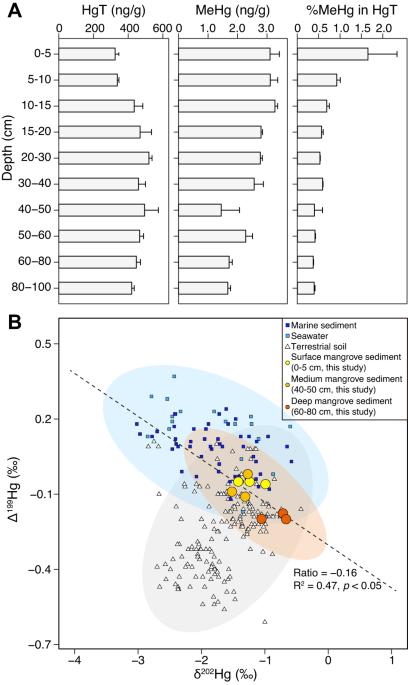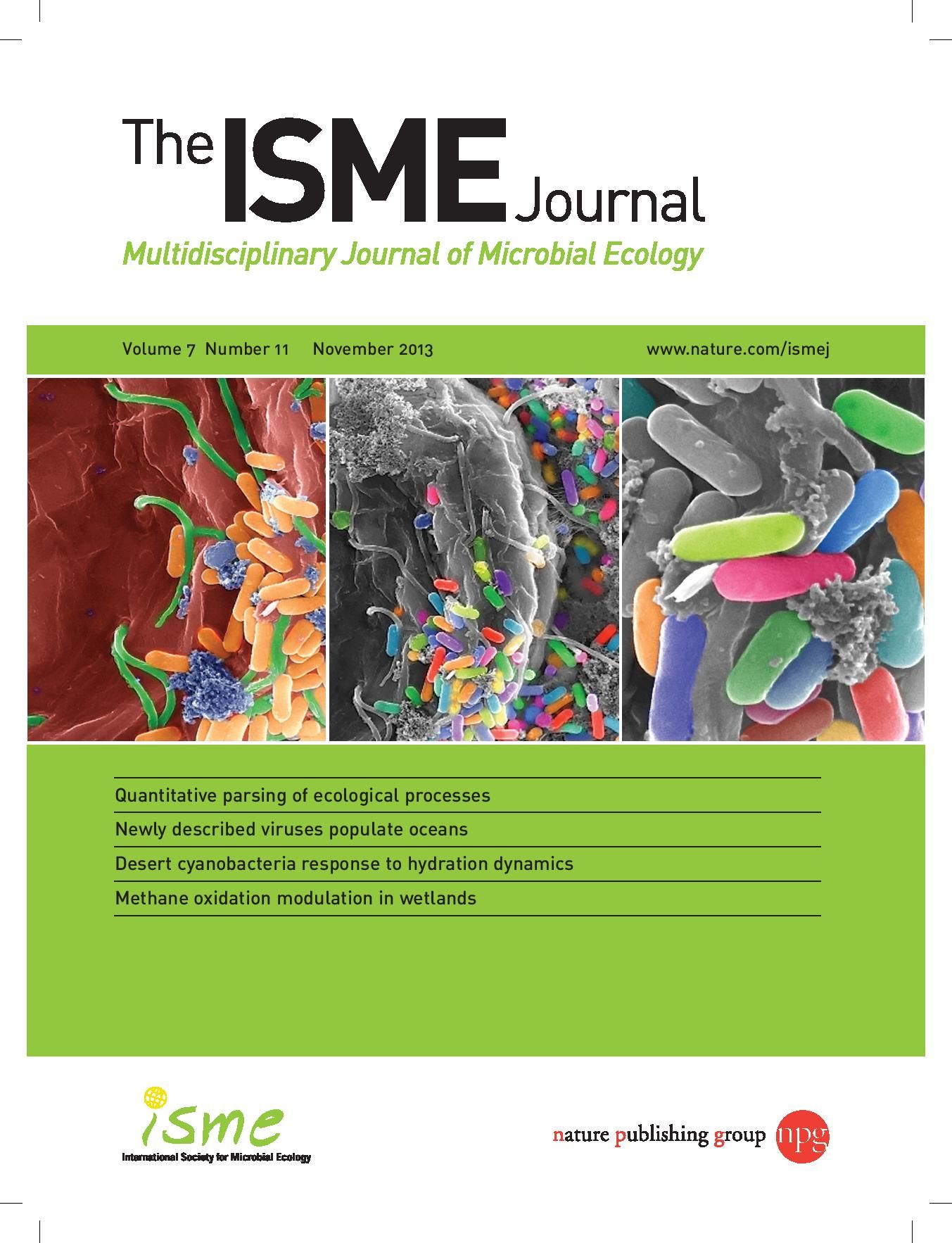红树林沉积物中亚表层汞甲基化物的系统发育和生态生理新颖性。
IF 10.8
1区 环境科学与生态学
Q1 ECOLOGY
引用次数: 0
摘要
红树林沉积物是全球汞循环的重要组成部分,也是甲基汞生产的热点。早期证据证明,经过充分研究的汞甲基化物在红树林表层沉积物中普遍存在;然而,它们在缺氧和高度还原的地下沉积物中缺乏多样性和代谢适应性。通过甲基汞生物地球化学分析和宏基因组测序,我们发现红树林地下沉积物(20-100 cm)显示出比浅层沉积物(0-20 cm)。1500多个红树林表层沉积物的区域尺度调查 km证明了汞甲基化微生物谱系(即属于Anaerolineae、Phycisphaerae和Desulfobacterales的微生物谱系)的普遍性和家族水平的新颖性。我们提出了具有硫酸盐还原能力的紫溪菌门候选谱系,作为目前在缺氧环境中研究不足的汞甲基化剂。与其他汞甲基化物不同,紫溪菌谱系不使用Wood-Ljungdahl途径,但具有进行甲硫氨酸合成以提供甲基的独特能力。钴胺素生物合成途径的缺失表明,这种汞甲基化谱系可能依赖于其同营养伙伴(即合营养杆菌目成员)在地下沉积物中获取能量。我们的研究结果扩大了地下汞甲基化物的多样性,并揭示了它们在红树林沉积物中独特的生态生理适应。本文章由计算机程序翻译,如有差异,请以英文原文为准。

Phylogenetic and ecophysiological novelty of subsurface mercury methylators in mangrove sediments
Mangrove sediment is a crucial component in the global mercury (Hg) cycling and acts as a hotspot for methylmercury (MeHg) production. Early evidence has documented the ubiquity of well-studied Hg methylators in mangrove superficial sediments; however, their diversity and metabolic adaptation in the more anoxic and highly reduced subsurface sediments are lacking. Through MeHg biogeochemical assay and metagenomic sequencing, we found that mangrove subsurface sediments (20–100 cm) showed a less hgcA gene abundance but higher diversity of Hg methylators than superficial sediments (0–20 cm). Regional-scale investigation of mangrove subsurface sediments spanning over 1500 km demonstrated a prevalence and family-level novelty of Hg-methylating microbial lineages (i.e., those affiliated to Anaerolineae, Phycisphaerae, and Desulfobacterales). We proposed the candidate phylum Zixibacteria lineage with sulfate-reducing capacity as a currently understudied Hg methylator across anoxic environments. Unlike other Hg methylators, the Zixibacteria lineage does not use the Wood–Ljungdahl pathway but has unique capabilities of performing methionine synthesis to donate methyl groups. The absence of cobalamin biosynthesis pathway suggests that this Hg-methylating lineage may depend on its syntrophic partners (i.e., Syntrophobacterales members) for energy in subsurface sediments. Our results expand the diversity of subsurface Hg methylators and uncover their unique ecophysiological adaptations in mangrove sediments.
求助全文
通过发布文献求助,成功后即可免费获取论文全文。
去求助
来源期刊

ISME Journal
环境科学-生态学
CiteScore
22.10
自引率
2.70%
发文量
171
审稿时长
2.6 months
期刊介绍:
The ISME Journal covers the diverse and integrated areas of microbial ecology. We encourage contributions that represent major advances for the study of microbial ecosystems, communities, and interactions of microorganisms in the environment. Articles in The ISME Journal describe pioneering discoveries of wide appeal that enhance our understanding of functional and mechanistic relationships among microorganisms, their communities, and their habitats.
 求助内容:
求助内容: 应助结果提醒方式:
应助结果提醒方式:


